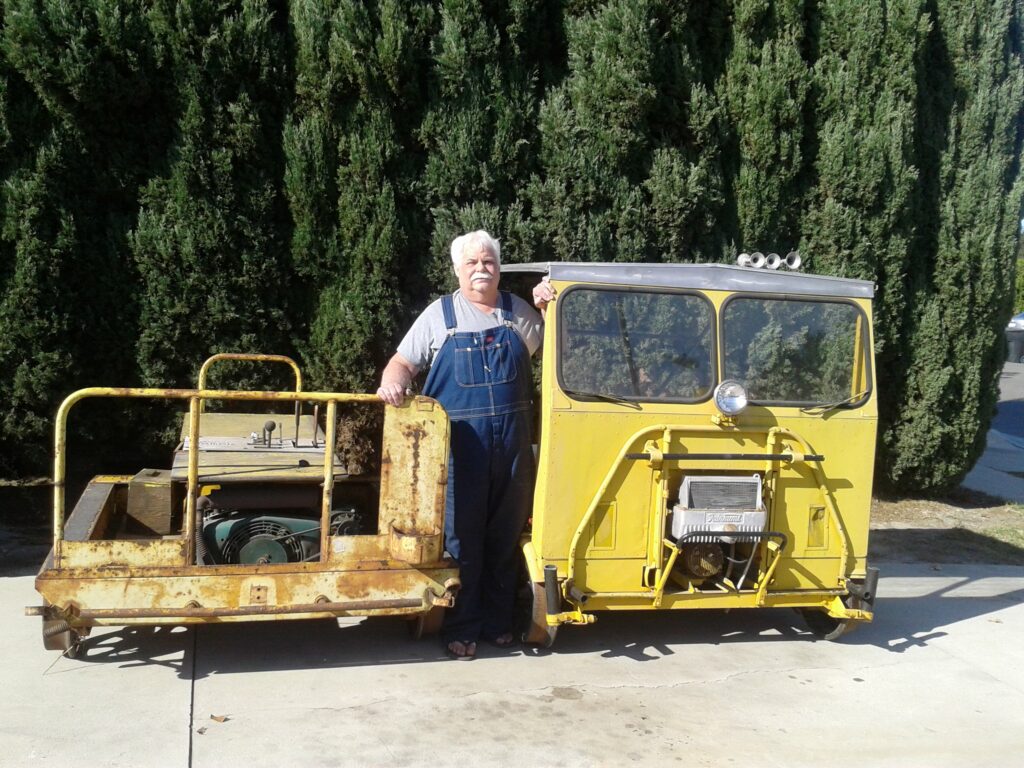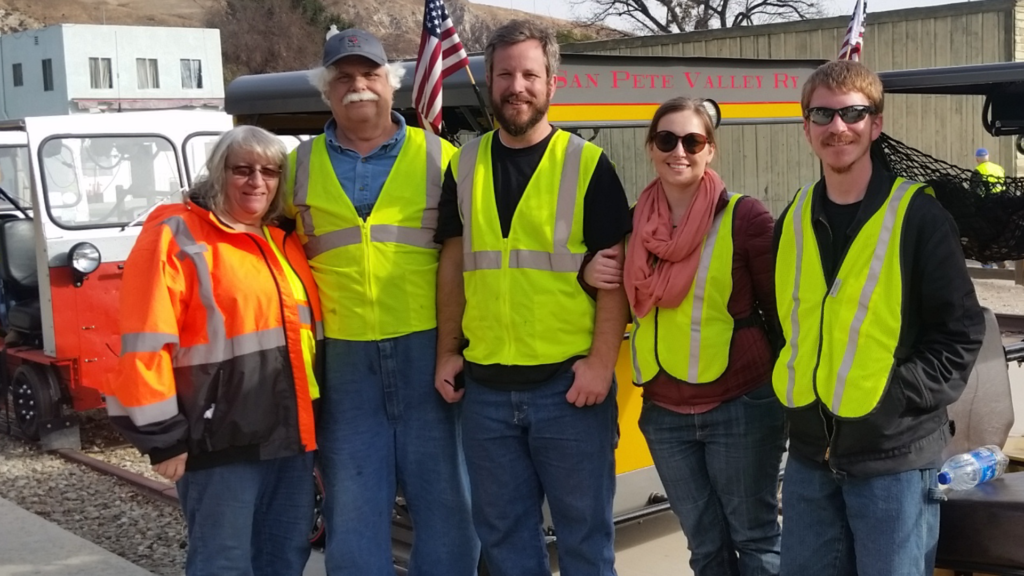
First, to explain the title of this page. I’ve modeled in different scales over the years. N Scale (1:162), HO (1:87), O (1:48), G (this ratio gets complicated). But when a person says he models in 12 inches to the foot, they are talking about the prototype.
Behind the folks above are railroad motorcars. Commonly called speeders. We enjoy taking these speeders on excursions, hosted by railroads and organized by NARCOA (North American Railcar Operators Association).
For me, it all started about 1,000 years ago (seems like) when a motorcar was discovered in a barn. After securing ownership, two friends and I hauled the speeder off. And that was the end of it for many years. The speeder sat in a friends backyard, collecting dust, rust and varmit poop.
Here in California there is a television series called California Gold, hosted by Huell Howser. As my wife and I sat watching an episode about speeders, my wife said “That looks like fun. I would like to do that”. My reply, “Well, I do own one”. Arrangements were made to pick it up.
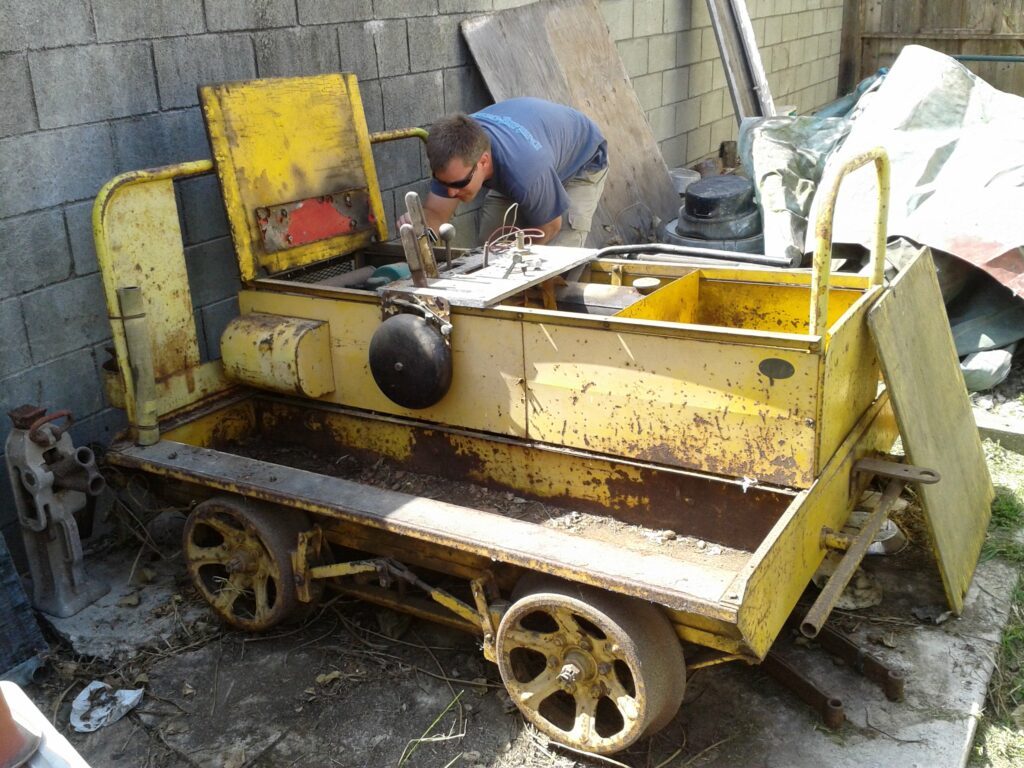
Greg inspects the Kalamazoo 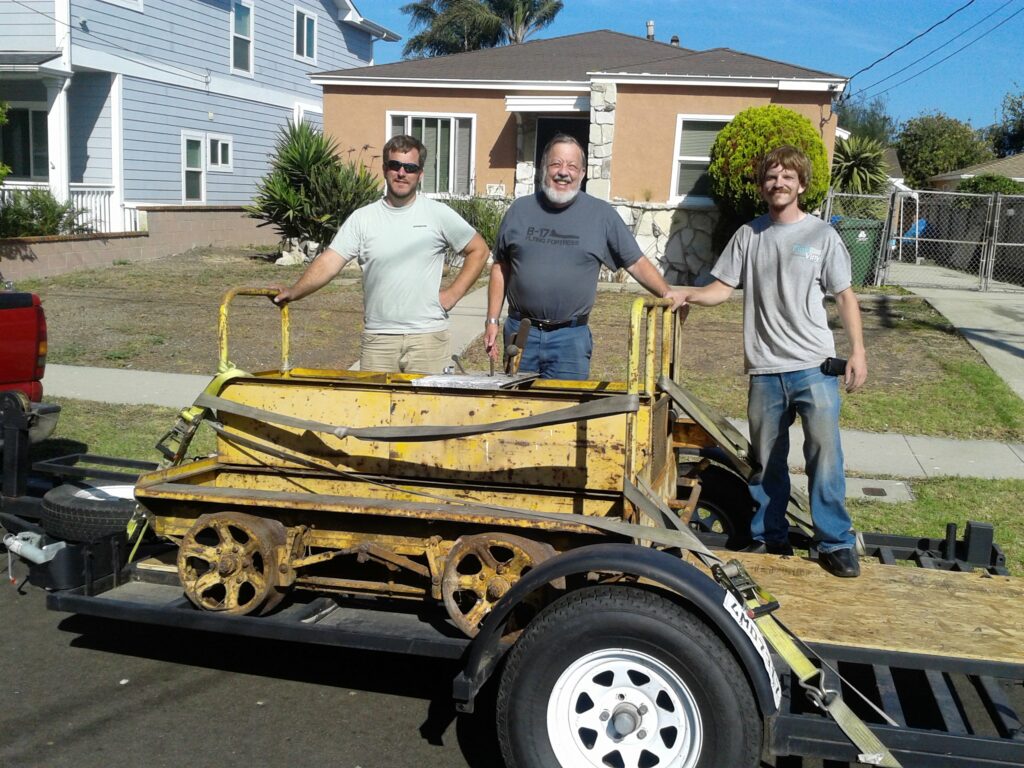
Kalamazoo on trailer, ready for a new home.
Upon getting the speeder home and making a closer inspection it appeared that it was not going to be possible to restore to operating condition. Floor boards were completely rusted through, fuel system was full of sludge, and so forth. Even the engine was full of rust. Since the engine obviously needed to be completely rebuilt, what is the harm and trying to run it. So we did.
So we had a rusted pile of junk, interesting junk, but junk. Maybe.
The next chapter of this story is when a friend stated they had a speeder, it used to run, but they don’t have the inclination to take it on any trips. They offered it to me for a fair price, so I had to buy it. This second speeder is a Fairmont M-19.
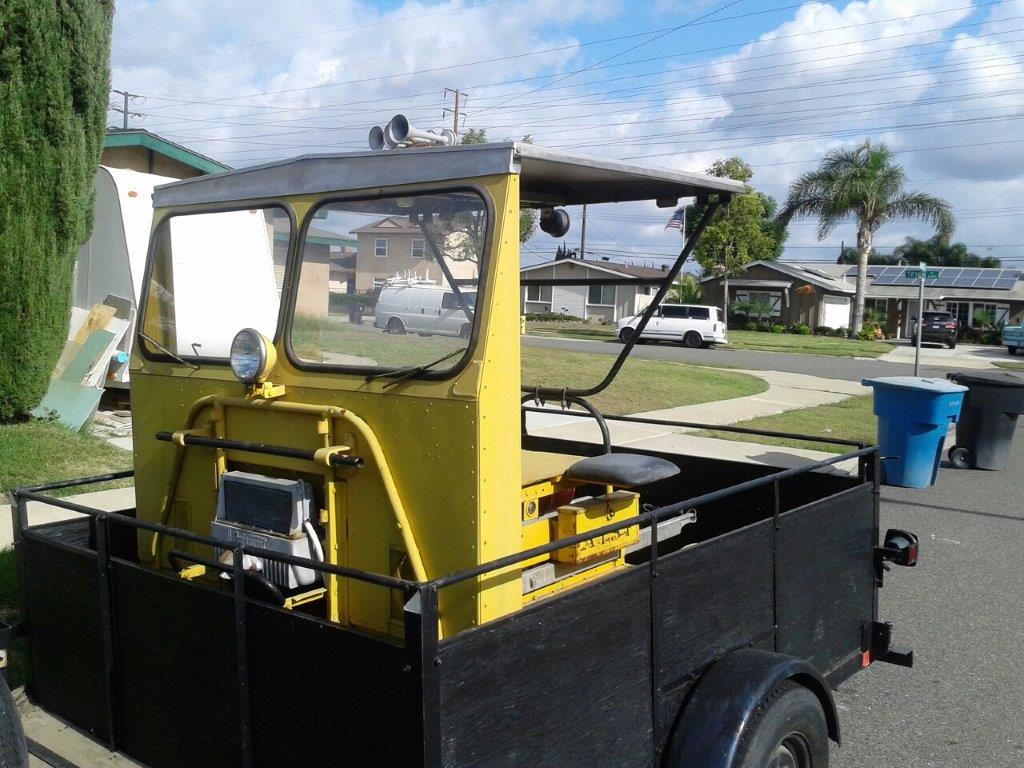
This speeder needed a little work, but run able. We thought. An M-19 has what is called a ‘popper’ engine. Single cylinder, two stroke (meaning mix gas and oil for fuel). It is belt driven, no transmission. To reverse, you reverse the motor. When running, you not only adjust the throttle, but the timing and lean/rich fuel mixture. After watching YouTube videos and signing up for NARCOA membership, we were off and running.
So the photo on the left are my two speeders before restoration. Our first speeder run was on the Fillmore & Western. We had altered the speeder to have four seats (very crowded seats), and my wife and two sons took to the rails. We had a lot to learn. If you look closely at the photo on the right, you will see a tow bar connecting two speeders. The speeder in front is owned by my Mentor Dan, and I’m being towed because we are broke down. Dan still kids me whenever we meet if he needs to tow me some more.
Tow bars. One of the many requirements of NARCOA is that each speeder has a tow bar and a hitch front and rear. If a speeder breaks down, you will have a couple of minutes to repair and get it running. And if not, you will be towed. I got towed a lot in the early days. Later, I ended up towing others a lot. Glad to return the favor.
Back to the story. My M-19 needed work. My intention was to have a professional rebuild the engine. I ended up having the entire car restored. I was sent photos of the rebuild at very steps along the way. That is when I decided that any machine is just nuts and bolts, and a few parts. So carefully documenting with photos along the way, I deconstructed the Kalamazoo.
But this did not stop me from enjoying speeder trips. Steve (the new friend that restored my M-19) insisted that I take one of his speeders while the M19 was restored. I was hesitant at first, but glad I did.
So at this point, I had two speeders. Kalamazoo K56A, and a Fairmont M-19. We enjoy both. The Kalamazoo is larger and accommodates four people. Easier to run with a Onan motor, two speed transmission with forward and reverse.
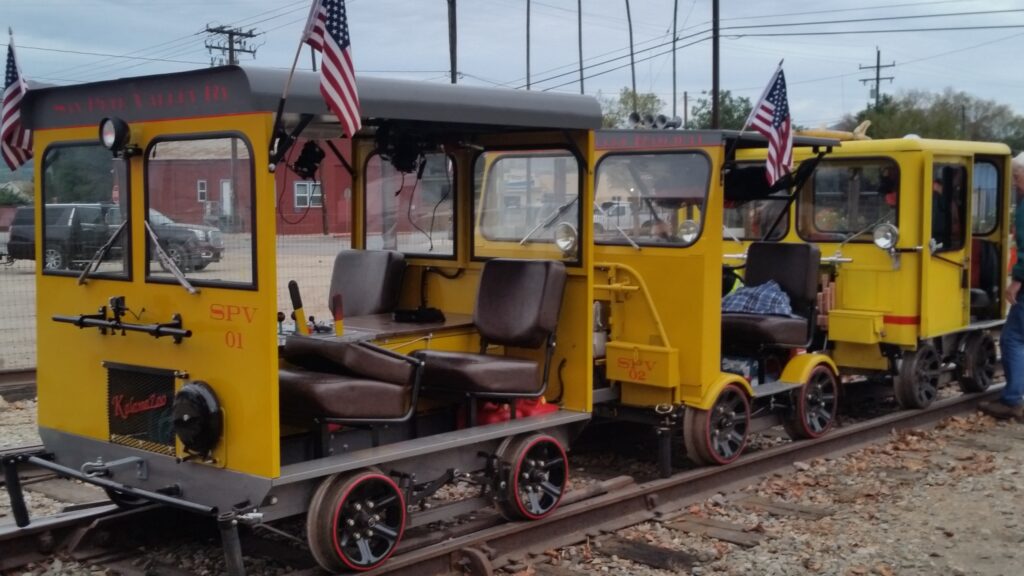
On track at Fillmore & Western 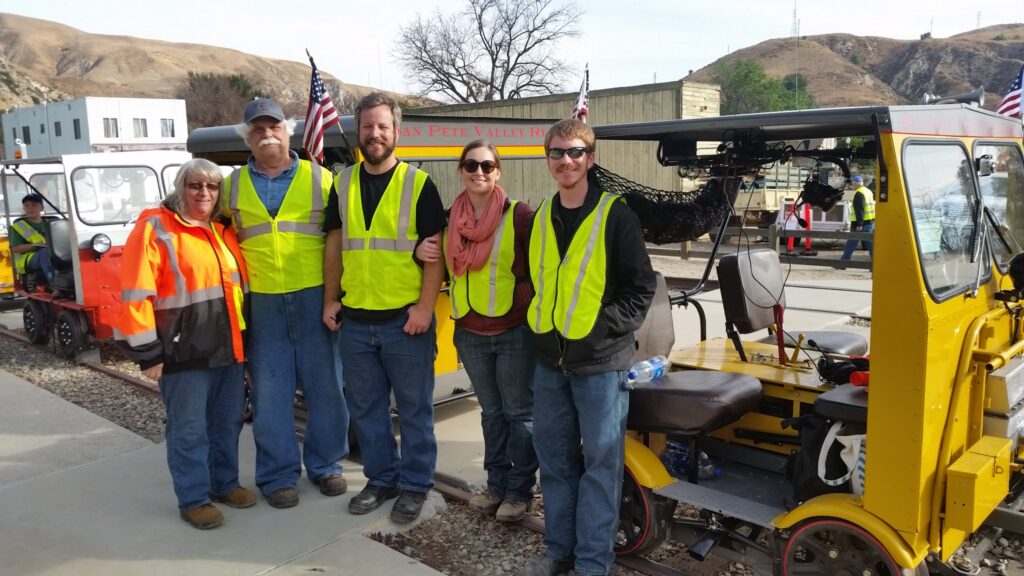
The Speeder Crew 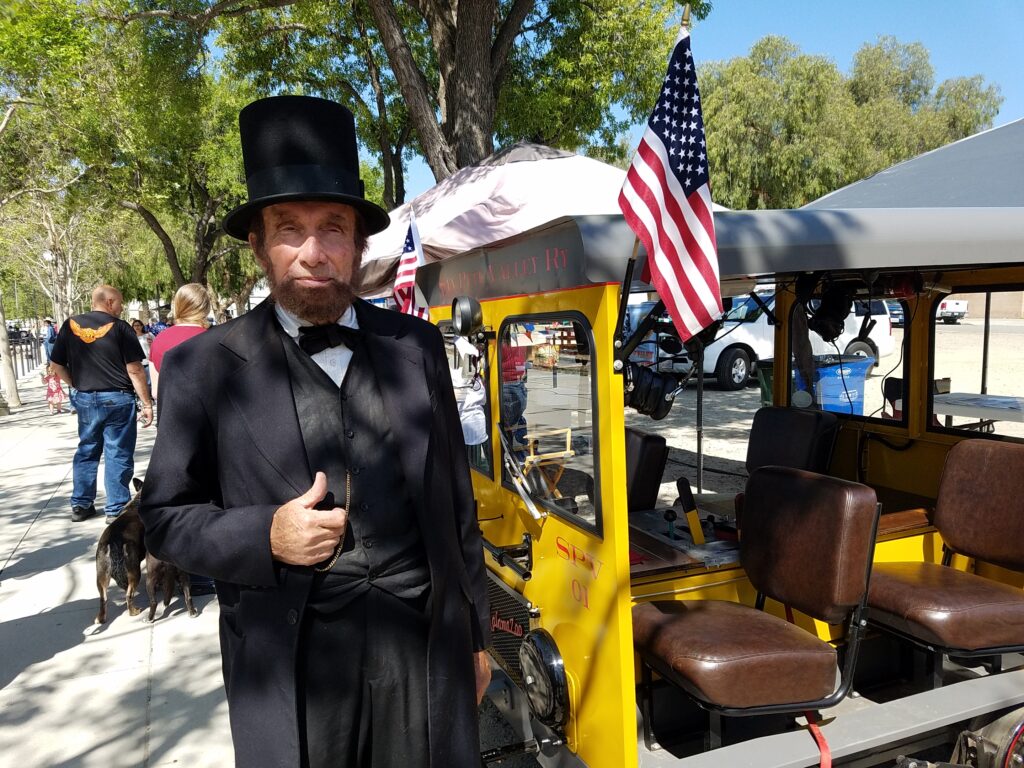
Abe visits while on display at F&W 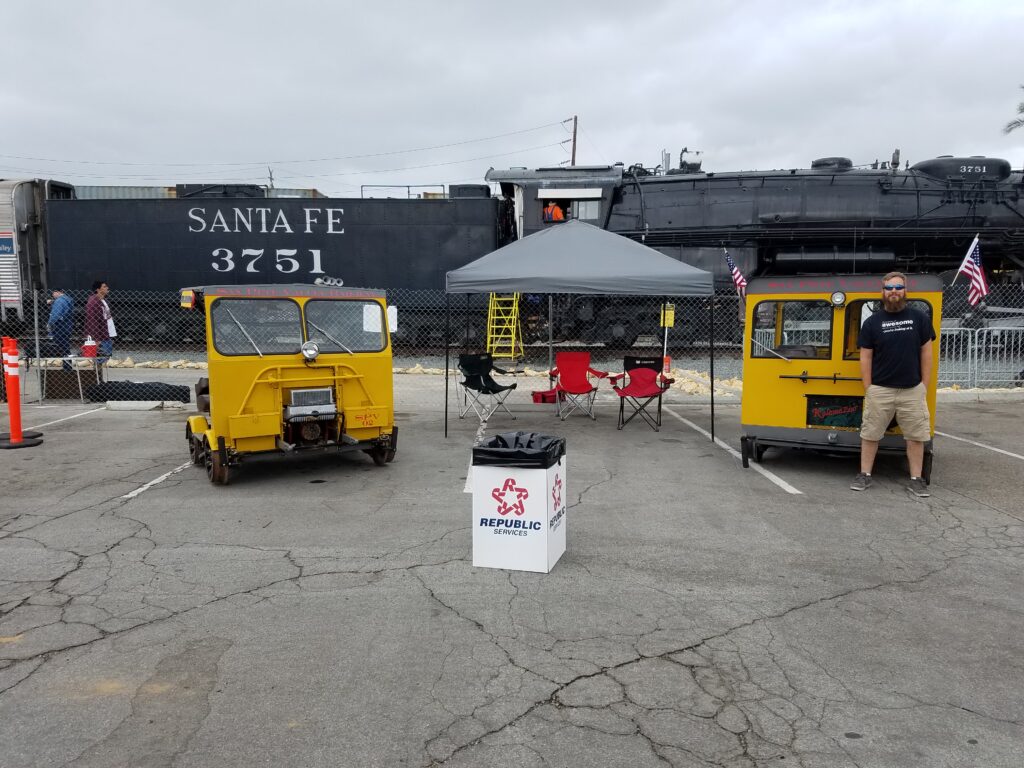
On display at Fullerton Train Days 
My mechanics at work 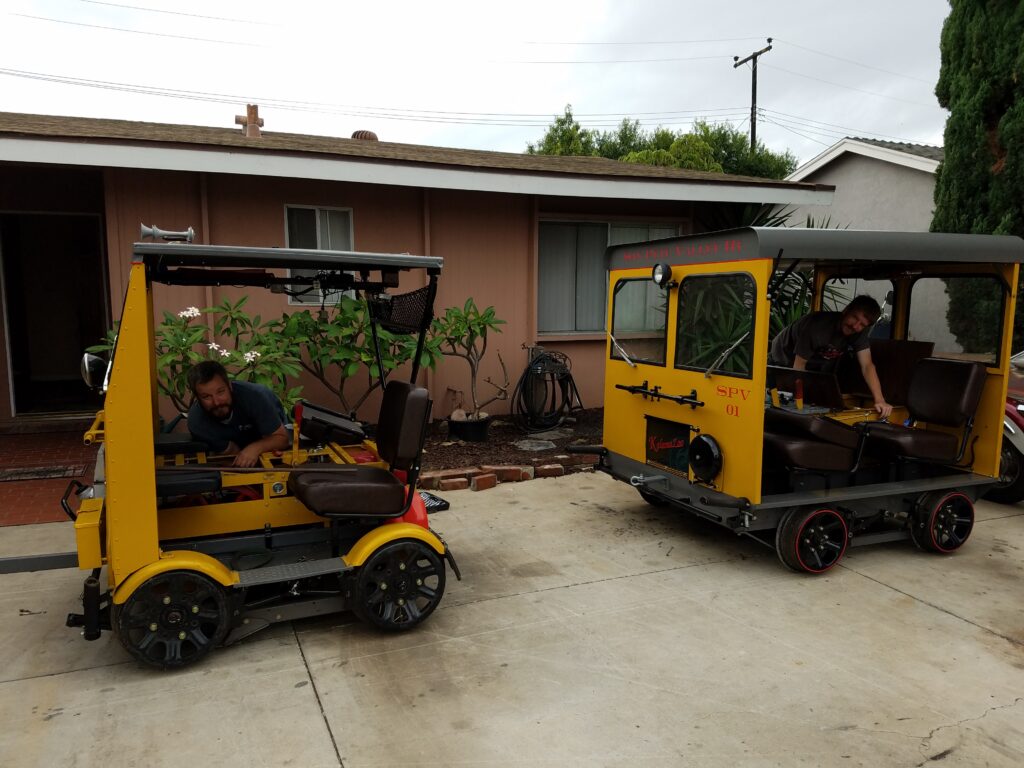
Other end of Mechanics
We have enjoyed this hobby since 2016, travelling to various railroads to run. We have been on railroads in California, Nevada, Oregon, Washington, Arizona, New Mexico and Oklahoma. Each railroad is different, and almost always very scenic.
Again in the early days, in conversing with other members, I was amazed at how many had multiple speeders. Having two or three was more of the norm. Some had eight, or twelve. But now I get it. I was offered to purchase a Narrow Gauge speeder. And the offer included a test run.
I interrupt this story for a word about Narrow Gauge (and a short story about how Standard Gauge became to be). Standard Gauge in America measures 4′ 8 1/2″ between rail head and rail head. Narrow Gauge is anything less that that measurement. With the most common Narrow Gauge of 3′ between rail head and rail head.
But how did Standard Gauge become the standard? Well first, remember the shuttle space program? The booster rockets were made in Utah (was it Morton Thiokol?). The booster rockets were transported by rail from Utah to Cape Canaveral, Florida. The limiting track was a tunnel in Utah (I believe it is the Altamont tunnel). Anyway the boosters had to fit through that tunnel, and of course the the tunnel was built for Standard Gauge. If you know your history you know that steam locomotives and trains were invented in England. And these trains initially were built to run on wheels that would follow ruts left in the limestone by Roman invaders. The Roman carts were pulled by two horses side by side. So their carts and wheels were built to that width. So . . . it can be said . . . that the US shuttle space program was centered on the distance from one horses ass to another.
Back to the story: Three days on the Durango and Silverton RR, one travel day, then three days on the Cumbres & Toltec RR. How could I refuse. My son and I went on the run and it was the best yet. My wife initially would not go because being scared of the rails at one point are on a narrow ledge 400 feet above the river. But when I came back with photos, showing the aspens in fall colors and other scenic features, she now want to go.
So enter my third car into the scene. The speeder offered was just too expensive. The owner knew this before I took it to Colorado to run, but insisted I take it anyway. I let anyone asking know that it was for sale. Seems like once you are into speeders, everyone knows it. So a friend of a friend told my son they saw one sitting in someone’s front yard. Sort of ‘yard art’. But where is it? Dunno. So Greg started driving around looking for it, found it, and a deal was struck.
So by now you know the procedure. We got it running and took it on a test ride. The afternoon we got back from the test ride, we started taking it apart. Several photos have been taken, and the rebuild is still in process. You will note that it began as a Standard Gauge speeder, but it is being converted to 3′ Narrow Gauge.
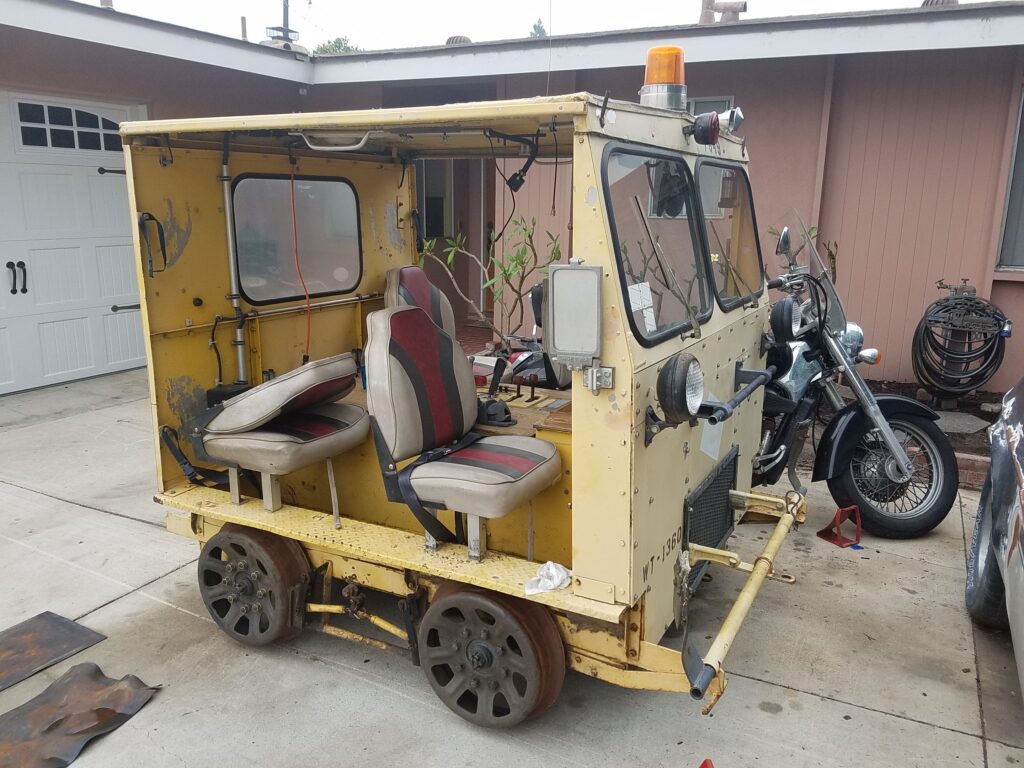
As delivered 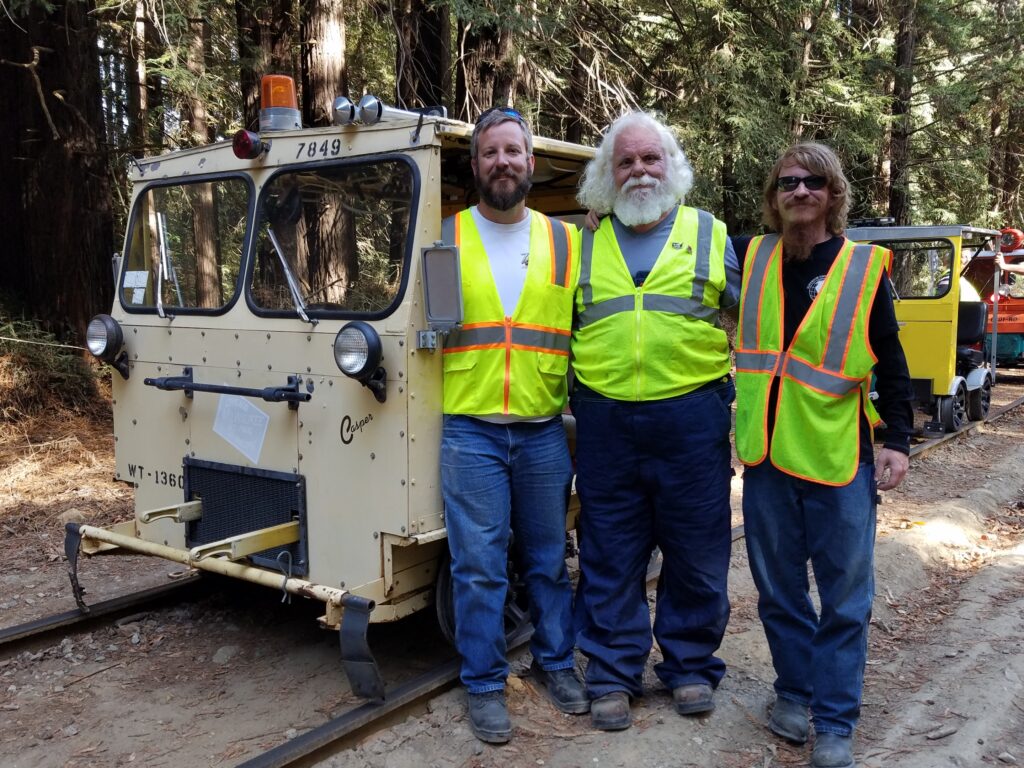
Tryout run
